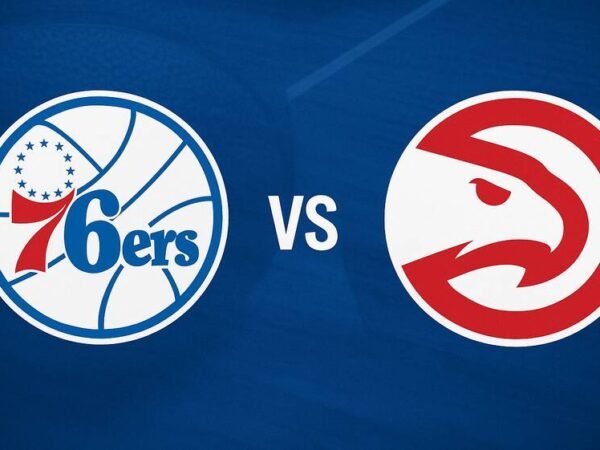The recent clash between the Minnesota Timberwolves and the Denver Nuggets was nothing short of a basketball spectacle. Fans were treated to display athleticism, strategy, and raw talent as two of the NBA’s most competitive teams went head-to-head. This article delves into the player statistics from this thrilling encounter, highlighting standout performances and critical moments that defined the game.
Pre-Game Expectations and Team Form
Before diving into the individual player stats, it’s essential to set the scene by understanding the pre-game expectations and the form both teams carried into this matchup. The Timberwolves, known for their young and dynamic roster, were coming off challenging games. Their performance could have been more consistent, with flashes of brilliance interspersed with moments of inexperience. Conversely, the Nuggets have been a more steady presence in the league, leveraging their depth and experience to maintain a strong standing in the Western Conference.
The anticipation was palpable as analysts and fans alike speculated on how the Timberwolves’ youthful exuberance would compare against the Nuggets’ seasoned expertise. Key players like Karl-Anthony Towns for the Timberwolves and Nikola Jokic for the Nuggets were expected to be pivotal in their respective team’s fortunes.
Key Players and Their Performances
Karl-Anthony Towns
Karl-Anthony Towns, the cornerstone of the Timberwolves’ lineup, significantly impacted the game. Known for his versatility, Towns showcased his ability to influence the game both offensively and defensively. He scored 28 points, secured 12 rebounds, and provided five assists. Towns’ shooting accuracy was commendable, particularly from beyond the arc, where he made 4 out of 7 attempts. His presence in the paint was equally imposing, as he managed to block three shots and alter several others, making life difficult for the Nuggets’ attackers.
Anthony Edwards
Anthony Edwards, the Timberwolves’ young star, continued to build on his impressive rookie season. Edwards contributed 24 points, grabbed seven rebounds, and dished out four assists. His explosive athleticism and scoring ability were on full display as he consistently penetrated the Nuggets’ defense and finished strong at the rim. Edwards also showed growth in his defensive game, with two steals and numerous deflections that disrupted the Nuggets’ offensive flow.
D’Angelo Russell
D’Angelo Russell provided the Timberwolves with much-needed experience and poise in the backcourt. Russell scored 18 points, handed out nine assists, and collected four rebounds. His ability to orchestrate the Timberwolves’ offense and find open teammates was crucial, especially during critical game stretches. Russell’s shooting from mid-range and beyond the arc helped space the floor, making it easier for Towns and Edwards to operate.
Nikola Jokic
Nikola Jokic, the reigning MVP, was the standout performer for the Denver Nuggets. Jokic delivered a masterclass in all-around play, tallying 30 points, 15 rebounds, and eight assists. His exceptional court vision and passing ability were displayed as he set up his teammates for easy baskets with pinpoint precision. Jokic scored efficiently, shooting 12 of 18 from the field, including 3 of 5 from three-point range. Defensively, he also made his presence felt with two blocks and several altered shots.
Jamal Murray
Jamal Murray, back in action after his recovery from injury, added 22 points, six assists, and three rebounds to the Nuggets’ effort. Murray’s return was eagerly anticipated, and he did not disappoint, displaying his trademark scoring ability and clutch playmaking. His shooting, particularly in the second half, kept the Nuggets within striking distance and provided a much-needed spark.
Michael Porter Jr.
Michael Porter Jr. was another key contributor for the Nuggets. Porter scored 19 points and grabbed eight rebounds. His athleticism and shooting range were critical in stretching the Timberwolves’ defense. Porter’s ability to score from various positions on the court added a valuable dimension to the Nuggets’ offense.
Team Strategies and Tactical Adjustments
Timberwolves’ Strategy
The Timberwolves’ game plan revolved around maximizing the strengths of their star players while ensuring a balanced team effort. Offensively, they focused on creating opportunities for Towns and Edwards through pick-and-roll situations and isolation plays. The spacing provided by Russell’s shooting allowed Towns to operate effectively in the post and Edwards to exploit driving lanes.
Defensively, the Timberwolves employed a mix of man-to-man and zone defenses to disrupt the Nuggets’ rhythm. Towns’ presence in the paint deterred the Nuggets’ inside game, forcing them to rely more on perimeter shooting. The Timberwolves also emphasized transition defense to mitigate the Nuggets’ fast-break opportunities.
Nuggets’ Strategy
The Nuggets’ approach centered on leveraging Jokic’s playmaking and scoring abilities. Offensively, they ran their sets through Jokic at the high post and elbow, allowing him to score or facilitate. Murray and Porter’s off-ball movements created spacing and open shots, which Jokic exploited with his passing.
Defensively, the Nuggets aimed to limit Towns’ effectiveness by double-teaming him in the post and closing out aggressively on shooters. They also tried to contain Edwards’ penetration by packing the paint and forcing him to take contested jump shots. However, the Timberwolves’ ball movement and shooting accuracy often countered these tactics.
Crucial Moments and Turning Points
The game was characterized by several key moments that shifted momentum. In the third quarter, the Timberwolves’ 10-0 run, sparked by consecutive three-pointers from Russell and a fast-break dunk by Edwards, gave them a significant lead. However, the Nuggets responded with a 12-2 run of their own, led by Jokic’s scoring and playmaking, which brought them back into contention.
In the fourth quarter, with the game hanging in the balance, Towns hit a crucial three-pointer followed by a defensive stop and another basket in the paint, giving the Timberwolves a slender lead. The final minutes saw a flurry of exchanges, but clutch free throws by Russell and a critical defensive rebound by Towns sealed the victory for the Timberwolves.
Statistical Breakdown
Timberwolves’ Team Stats
- Field Goal Percentage: 48.7%
- Three-Point Percentage: 39.5%
- Free Throw Percentage: 82.1%
- Rebounds: 45
- Assists: 27
- Turnovers: 14
- Steals: 8
- Blocks: 6
Nuggets’ Team Stats
- Field Goal Percentage: 46.3%
- Three-Point Percentage: 37.8%
- Free Throw Percentage: 79.5%
- Rebounds: 42
- Assists: 25
- Turnovers: 16
- Steals: 6
- Blocks: 4
Post-Game Analysis and Implications
The Timberwolves’ victory over the Nuggets significantly boosted their morale and standings. It demonstrated their potential to compete with top-tier teams and highlighted the growth of their young core. For the Nuggets, the game served as a reminder of the areas needing improvement, particularly in handling dynamic offensive threats and minimizing turnovers.
This matchup provided valuable insights into the strengths and weaknesses of both teams. The Timberwolves showcased their burgeoning talent and potential, while the Nuggets’ resilience and experience were evident, albeit insufficient to secure the win. Moving forward, both teams will look to build on this game, refining their strategies and addressing the highlighted issues to enhance their performance in future encounters.
Do Read: Knicks vs 76ers Match Player Stats












